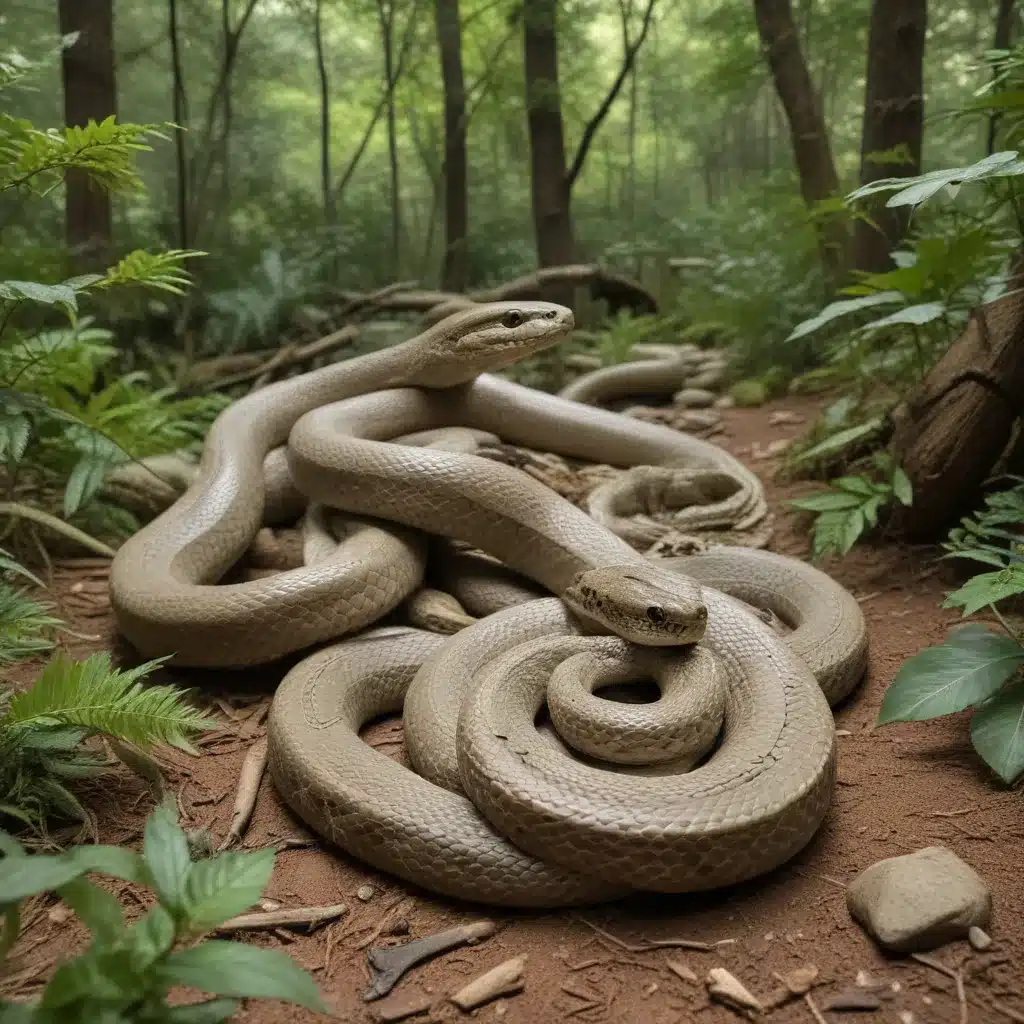
Unlocking the Secrets of Successful Snake Husbandry
Maintaining a thriving captive snake population requires meticulous attention to detail and a deep understanding of their unique care needs. As exotic reptile enthusiasts, we have a responsibility to ensure our slithering companions receive the highest level of husbandry, from tailored enclosure setups to specialized feeding regimes. In this comprehensive guide, we’ll delve into the intricacies of snake care, exploring best practices for housing, feeding, breeding, and navigating the legal landscape surrounding the ownership and sale of these remarkable creatures.
Designing the Perfect Habitat
The foundation of successful snake husbandry lies in creating an environment that closely mimics the snake’s natural habitat. This involves carefully considering factors such as temperature, humidity, substrate, and hiding spots. Proper thermoregulation is crucial, as snakes are ectothermic and rely on external heat sources to regulate their body temperature.
To achieve the ideal thermal gradient, enclosures should feature a warm side, where the temperature ranges from 85°F to 95°F, and a cooler side, maintaining a temperature between 70°F and 80°F. Maintaining the appropriate humidity level, typically between 50% and 70%, is also essential to prevent respiratory issues and ensure the snake’s overall health.
Substrate choice plays a vital role in promoting natural behaviors and maintaining a clean, safe environment. Appropriate options include aspen shavings, cypress mulch, or newspaper, depending on the snake species and personal preferences. Incorporating hiding spots, such as hollow logs, rock caves, or commercially available hides, allows the snake to feel secure and engage in its natural burrowing and sheltering instincts.
Visit our website to explore a wide range of enclosure accessories and setup guides tailored to specific snake species.
Nutritional Needs and Feeding Protocols
Providing a balanced and varied diet is essential for the long-term health and well-being of captive snakes. The dietary requirements can vary significantly depending on the snake’s species, size, and age. Generally, snakes are carnivorous and thrive on a diet of appropriately sized rodents, such as mice or rats.
It’s crucial to source high-quality, pre-killed prey items that are free from contaminants and diseases. The size of the prey should be proportionate to the snake’s body size, typically no larger than the widest part of the snake’s body. Frozen-thawed prey is often the safest and most convenient option, as it minimizes the risk of injury to the snake and ensures consistent nutritional content.
Feeding schedules should be adjusted based on the snake’s age, size, and metabolic rate. Younger, growing snakes may require more frequent meals, while adult snakes may only need to be fed every 7 to 10 days. It’s essential to monitor the snake’s body condition and adjust the feeding regimen accordingly to maintain a healthy weight and prevent obesity or nutritional deficiencies.
Breeding Considerations and Techniques
Responsible breeding of captive snakes is a complex and rewarding endeavor that requires a deep understanding of the species’ natural history and reproductive behaviors. Proper conditioning, timing, and environmental cues play a crucial role in successful breeding programs.
One of the key factors to consider is the appropriate breeding season for the target snake species. Many snakes exhibit distinct seasonal patterns, with cooler winter temperatures triggering the onset of the breeding process. Providing the necessary temperature fluctuations and photoperiod adjustments can help stimulate the natural breeding cycle.
Successful breeding also requires careful monitoring of the snakes’ overall health and body condition. Ensuring optimal nutrition, hydration, and stress-free environments are essential for both the male and female snakes to engage in successful mating and egg-laying (or live birth for ovoviviparous species).
When it comes to incubation and hatchling care, maintaining precise temperature and humidity levels is critical. Proper incubation techniques, such as the use of specialized incubators or natural substrates, can greatly improve the chances of successful hatching and the production of healthy offspring.
Navigating the Legal Landscape
The ownership and sale of exotic reptiles, including snakes, are subject to a complex web of regulations and legal requirements that vary widely across different regions and jurisdictions. It is crucial for both snake enthusiasts and breeders to familiarize themselves with the applicable laws and guidelines to ensure full compliance.
At the federal level, the United States Fish and Wildlife Service (USFWS) oversees the import, export, and interstate transport of certain snake species, particularly those listed under the Convention on International Trade in Endangered Species of Wild Fauna and Flora (CITES). Compliance with CITES regulations is essential for the legal trade and possession of protected snake species.
Additionally, individual states and local municipalities may have their own set of rules and restrictions regarding the ownership, breeding, and sale of snakes. These can range from complete bans on certain species to specific permitting requirements and housing guidelines. It is the responsibility of snake owners and breeders to research and adhere to the relevant laws and regulations in their respective areas.
Failure to comply with these legal frameworks can result in significant penalties, including fines and the confiscation of the animals. Therefore, it is crucial to stay informed and seek guidance from reputable sources, such as local wildlife agencies and experienced reptile enthusiasts, to ensure the responsible and legal ownership and management of captive snake populations.
Fostering a Thriving Captive Snake Community
Maintaining healthy, well-cared-for captive snake populations not only benefits the individual animals but also contributes to the broader conservation efforts for these remarkable reptiles. By upholding the highest standards of snake husbandry, breeding, and legal compliance, we can cultivate a vibrant and sustainable captive snake community that serves as a testament to our commitment to these fascinating creatures.
Whether you are a seasoned snake enthusiast, a budding breeder, or simply someone with a fascination for these slithering wonders, this comprehensive guide has provided you with the essential insights and practical knowledge to create optimal environments for your captive snakes. By embracing these best practices, you can unlock the true potential of your serpentine sanctuary and foster a thriving, responsible, and legally compliant captive snake community.

